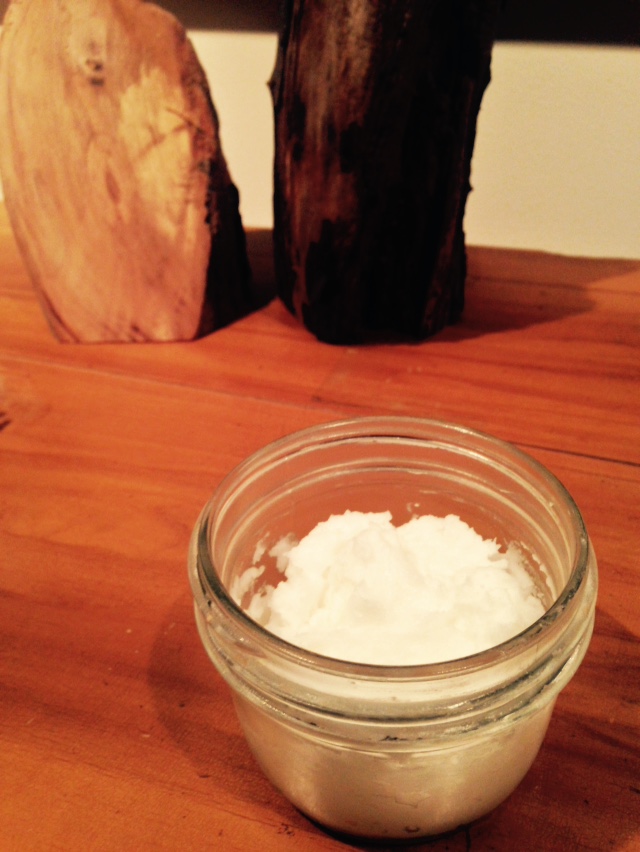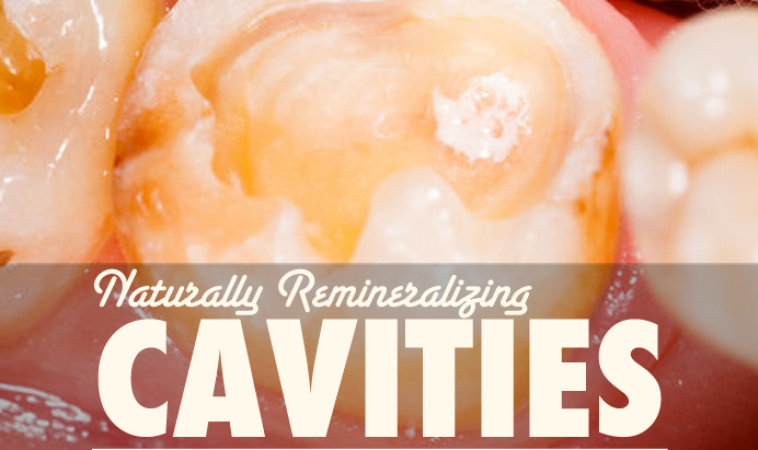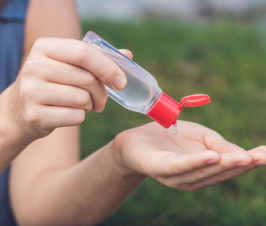Our Teeth are Alive!
They have anatomy, tissue variations and layers. The hard white crown is the part we can see. The root is the bottom 2/3 of the tooth embedded into our jaw. The inner dental pulp is a network of blood & lymph vessels, nerve and connective tissue.1 The enamel of our teeth is highly calcified and the hardest tissue in the body! It dissolves in acid (pH < 5.5) and cannot be regenerated. The normal pH of the mouth is neutral (pH 7) until other factors are introduced.1 If we don’t take care of our teeth by avoiding refined sugars, processed foods and daily cleaning the enamel can develop a bacterial film or plaque. Plaque build up can lead to gingivitis, cavities and more. Taking care of our teeth involves 2 steps:
1. Eating well
2. Cleaning well
Eating well: What does a good diet look like?
- Raw + Radiant – There is nothing better for us than the nutrients we get from eating raw fruits, vegetables, seeds, nuts and oils. They are full of the vitamins, minerals, antioxidants, protein, fats and carbohydrates that we need to survive and thrive!
- Hydration- Staying hydrated is important for many of our body’s systems. It maintains blood pressure, hydrates our muscles and tissues, promotes good bowel movements, electrolyte balance, detoxification through our kidney’s and more. Drinking water, herbal tea, clear soups and sun tea is a great way to stay hydrated.
- Enjoyable Meal Times- It was Dr. Bastyr, ND who said the worst thing you can eat with your meal is worry! And he’s right. Stress decreases the amount of hydrochloric acid we make, preventing proper nutrient breakdown, bloating and undigested food in our stool. It also leads to intestinal hyperpermeability syndrome, bowel dysbiosis and food allergies. Large, undigested food molecules that pass into our intestines feed the pathogenic bacteria in our gut which leads to inflammation and separation of the tight junctions between our gut cells. Food particles leak out into the blood causing an immunological reaction. The immune system remembers molecules and pathogens it has made antibodies to in the past, and reacts to them each time it makes contact with them. In short, when you are about to eat: sit down, take a breath, close your computer, leave your phone in another room, connect with the person across from you, or with yourself, and enjoy your food.
Cleaning well: What is in our toothpaste?2-6
Cleaning our teeth well means we are brushing, flossing or oil pulling the bacteria out of our mouths so they can’t form plaques, inflammation and cavities. We are recommended by most dentists to brush our teeth after each meal or at least twice a day. So what is in conventional toothpaste exactly and what does it do?
- Triclosan– The United States’ Environmental Protection Agency (EPA) classifies triclosan as a pesticide. Suspected carcinogen. Possible contamination with dioxin, a very strong hormone disrupting substance.
- BHT(Butylated Hydroxytoluene) – Immunotoxic, reproductive toxicity, allergenic.
- Fluoride (Sodium Fluoride)- By-product of aluminum manufacturing- Developmental-reproductive toxicity
- PEG-12-Toxic, potential for contamination with Ethylene Oxide, 1.4 Dioxane- Group 2 B carcinogen
- FD&C Blue (colouring) – Bioaccumulation, toxic
- Sodium Hydroxide– Organ toxic
- DEA(diethanolamine)-Foaming agent- disrupts hormones and forms cancer causing nitrates, repeated skin exposure to DEA can lead to increased risk of liver and kidney cancers.
- Propylene Glycol– Humectant- active ingredient in antifreeze. Material Safety Data Sheets (MSDS) for propylene glycol warn that the chemical can be rapidly absorbed through the skin, with prolonged contact leading to brain, liver and kidney abnormalities. EPA demands workers handle this substance with protective gloves. Quickly absorbed by mucosa.
- Polyethlyene– Plastic microbead lodges in gums causing discoloration and gingivitis.
- Aluminum oxide– Abrasive, neurotoxic, amyloid plaque forming, parathyroid hormone suppression, Neuro-, Skeletal and hepatotoxicity seen in premature infants exposed to aluminum as a contaminant in parentarel nutrition solution, also used in the manufacture of abrasives, refractories, ceramics, electrical insulators and resistors, catalysts, paper, spark plugs, and laboratory works, light bulbs, artificial gems, alloys, glass, heat resistant fibres, food additives (as a dispersing agent), in hollow-fibre membrane units for water desalination and in haemodialysis.
- Sodium Lauryl Sulfate– Detergent/Foaming agent- American College of Toxicology reports that sodium laurel sulfate may stay within the body for up to five days, accumulating in the heart, liver, lungs and brain. When combined with certain other chemicals, sodium laurel sulfate transforms into nitrosamines, a class of powerful carcinogens that cause the body to absorb harmful nitrates.
Toothpaste is toxic
Even some natural brands of toothpaste contain fluoride and abrasives like calcium carbonate and silica. Abrasivity is an important characteristic of toothpaste. It is the amount of wear a substance will have on the enamel of the tooth. An index called the Radioactive Dentin Abrasivity was generated by looking at how much abrasion a substance or toothpaste will cause. The higher the RDA, the more dentin erosion.7 Additionally, toothpastes labeled “whitening” are generally more abrasive to dentin, especially if they contain silica.8 It was surprising to see where most conventional toothpastes rank.
Have a look: http://c2-preview.prosites.com/131248/wy/docs/131248_rdh%20sheet.pdf
Is Remineralizing Possible? Yes!
Step 1– Get the pH of the mouth back to neutral
To maintain a neutral mouth pH it is important to have good oral hygiene. Get your teeth cleaned, avoid excessively acidic food and beverage and clear up any infections. Plaque produced by bacteria has a low and acidic pH which causes mineral loss from teeth. The low pH also enables other acid-loving organisms to thrive and continue to produce acid long after a food substrate has been used up.9Regular brushing is an important part of oral bacterial removal.
Step 2– Mineral supplementation
Minerals can penetrate the damaged enamel surface and repair it at pH values above 5.5 (enamel) and 6.5 (dentin). Enjoy neutral or basic foods like fresh green vegetables as much as possible. Making sure you are eating foods high in calcium is important too: spinach, kale, okra, collards, white beans and fish like sardines, perch, salmon and rainbow trout. Mineral salts will dissolve into the teeth promoting remineralization which has been shown to make teeth stronger and more resilient to cavities than before. 10-13
So what would a non-toxic toothpaste, with low abrasivity look like? Here is my recipe. It is raw, organic and effective. Enjoy!
 Dental Love Toothpaste
Dental Love Toothpaste
| Coconut oil | Used in oil pulling, works to dissolve and remove bacteria from the teeth. Contains caprylic acid, an antifungal. |
| Baking Soda | Removes stains, whitens and polishes teeth, removes plaque |
| Liquid minerals (no magnesium) | Remineralize teeth |
| Colloidal Silver | Antimicrobial to kill bacteria and keep product stable. |
| Calcium carbonate- optional | Remineralize teeth, mild abrasive |
| Essential oils | Anti-microbial, for taste + freshness |
| Stevia | For taste |
Directions: in a double boiler, heat coconut oil on low until melted. Add in the other ingredients and mix well. Leave out to harden or put in fridge. Prior to use, whip it up with a fork until it has a whip cream texture.
Store: in a glass container. Keep in the fridge in warm climates.
Use: apply a dime sized amount to toothbrush, rub around teeth to evenly distribute. Brush as usual.
 Dr. Ariel Jones is a native of Vancouver BC and a graduate of BINM (2013). Her practice emphasizes removing the physical, mental and spiritual obstacles to cure while implementing a toxin-free lifestyle for raw, radiant health. Ariel has enjoyed living in Victoria, BC during her BSc. in biology and psychology, Calgary AB and Hilo Hawaii for a post-graduate residency focused on raw food diet, detoxification, addictions and cancer therapies.
Dr. Ariel Jones is a native of Vancouver BC and a graduate of BINM (2013). Her practice emphasizes removing the physical, mental and spiritual obstacles to cure while implementing a toxin-free lifestyle for raw, radiant health. Ariel has enjoyed living in Victoria, BC during her BSc. in biology and psychology, Calgary AB and Hilo Hawaii for a post-graduate residency focused on raw food diet, detoxification, addictions and cancer therapies.
References:
- Sturdevant JR, Lundeen TF, Sluder TB Jr. Clinical significance of dental anatomy, histology, physiology, and occlusion. In: Robertson TM, Heymann HO, Swift EJ Jr, eds. Sturdevant’s Art and Science of Operative Dentistry. 4th ed. Mosby: St. Louis, MO; 2002:13-61.
- Toothpaste Ingredients. – Colgate Total. Available at: http://www.colgatetotal.com/health-benefits/toothpaste-ingredients. Accessed May 31, 2015.
- Lynch, W. What Are the Harmful Ingredients in Toothpaste? LIVESTRONGCOM. 2015. Available at: http://www.livestrong.com/article/167101-what-are-the-harmful-ingredients-in-toothpaste/. Accessed May 31, 2015.
- Alter, M. Dentist calls Crest toothpaste dangerous; Now P&G changing ingredients. 7NEWS. 2014. Available at: http://www.thedenverchannel.com/lifestyle/health/dentist-calls-crest-toothpaste-dangerous-now-pg-changing-ingredients. Accessed May 31, 2015.
- Learn More About Toothpastes. Learn More About Toothpastes. Available at: http://www.ada.org/en/science-research/ada-seal-of-acceptance/product-category-information/toothpaste. Accessed May 31, 2015.
- Krewski, D, Yokel, RA, Nieboer, E, et al. HUMAN HEALTH RISK ASSESSMENT FOR ALUMINIUM, ALUMINIUM OXIDE, AND ALUMINIUM HYDROXIDE. Journal of toxicology and environmental health Part B, Critical reviews. 2009. Available at: http://www.ncbi.nlm.nih.gov/pmc/articles/pmc2782734/. Accessed May 31, 2015.
- 1. Wiegand, A, Kuhn, M, Sener, B, Roos, M, Attin, T. Abrasion of eroded dentin caused by toothpaste slurries of different abrasivity and toothbrushes of different filament diameter. Journal of Dentistry. 2009;37(6):480–484. doi:10.1016/j.jdent.2009.03.005.
- Schemehorn, BR, Moore, MH, Putt, MS. Result Filters. National Center for Biotechnology Information. 2011. Available at: http://www.ncbi.nlm.nih.gov/pubmed/21290981. Accessed May 31, 2015.http://www.ncbi.nlm.nih.gov/pubmed/21290981
- Loesche, WJ. Microbiology of Dental Decay and Periodontal Disease. Microbiology of Dental Decay and Periodontal Disease. 1996. Available at: http://www.ncbi.nlm.nih.gov/books/nbk8259/. Accessed May 31, 2015.
- Robertson TM, Lundeen TF. Cariology: the lesion, etiology, prevention, and control. In: Robertson TM, Heymann HO, Swift EJ Jr, eds. Sturdevant’s Art and Science of Operative Dentistry. 4th ed. Mosby: St. Louis, MO; 2002:63-132)
- Tooth Erosion in Children—US Perspective. Inside Dentistry. 2009;5(3 Suppl):8)
- Nazario, B. Calcium and Vitamin D: Top Foods to Prevent Osteoporosis. WebMD. 2014. Available at: http://www.webmd.com/food-recipes/guide/calcium-vitamin-d-foods. Accessed May 31, 2015.
- Benoit, J. Can Cavities Remineralize? | Wellness Mama. Wellness Mama. Available at: http://wellnessmama.com/podcast/can-cavities-remineralize/. Accessed May 31, 2015.


















Ariel, thank you for your material. Very helpful. Would you happen to have proportions for the toothpaste along with which beneficial oils?
Do you have a favorite liquid mineral formula?
I love the idea of making my own toothpaste! Can you please give me some direction on quantities and possible brands you would recommend? Thank you!